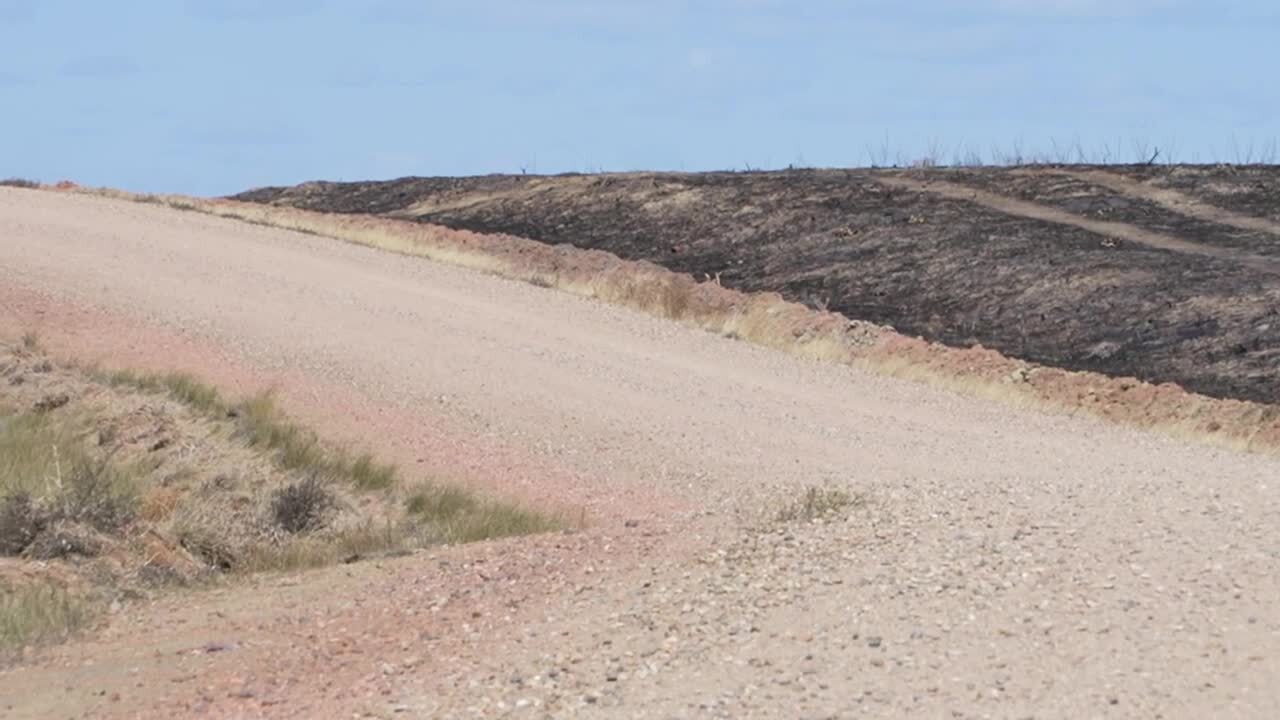After a week of burning through northern Wyoming and southeastern Montana, the dust is beginning to settle from the impacts of the Remington Fire.
While the fire is in a less aggressive state, the Southwest Incident Management team — one of the many agencies fighting the fire — said there is still much work to be done.
On Thursday, MTN visited the fire lines north of Leiter, Wyoming, with Jenifer Bunty from Southwest Incident Management to assess the damage.
“You can still see some of the grass that wasn’t touched for whatever reason,” said Bunty Thursday as she walked around a burnt field. "This field used to look like that one on the other side of the road."
The scene is just part of nearly 200,000 acres devastated by the blaze.
“This fire right now is burning at a little bit over 196,000 acres,” Bunty said. "So, it's a pretty large fire, and it was driven from those winds pushing it eastward. It was spread completely by the wind."

Bunty said that containing a wind-spread fire like Remington takes a team effort.
“We have people on our team called IMETs, they’re incident meteorologist and also fire behavior analysts," Bunty said. "Those folks work really closely together to account for things like wind, moisture, and relative humidity."
Weather contains many factors that play a role in the spread of wildfires, which Bunty breaks down into three parts that she calls the fire triangle.
“You need three things for a fire to burn,” Bunty said. "You need oxygen, fuel and a heat source."
Bunty said those three things are the focus of anyone fighting fires. She said that her team assesses the fire they are working on and decides which element they want to attack.
"If you have those three things, a fire will burn in any situation," Bunty said. "So, what we do, is try to take one of those elements out."
In the case of the Remington Fire, the element that Southwest Incident Management focused on was the fuel. Firefighters created fire lines that blocked the fire from having more fuel to burn. Fuel can be anything from grass, sage, trees, or other shrubs that are flammable.
“To put it simply, we put fire in a box so we make sure that we have lines all around it,” Bunty said. "Obviously, it's more challenging than it sounds but that's what we're trying to do."

Those fire lines can be made while the blaze is happening using bulldozers or other heavy machinery, but some fire lines already exist such as rivers, streams or roads.
"It's common for us to rely on what already exists," Bunty said. "Sometimes that's the most effective option."
While Bunty said the Remington Fire is in check for the most part, she said their team is staying focused — knowing that it can change at any moment.
"There's still a lot of work to do in terms of containing it and even in terms of rebuilding," Bunty said. “Any fire that’s lit can grow, as long as you have those three components."




